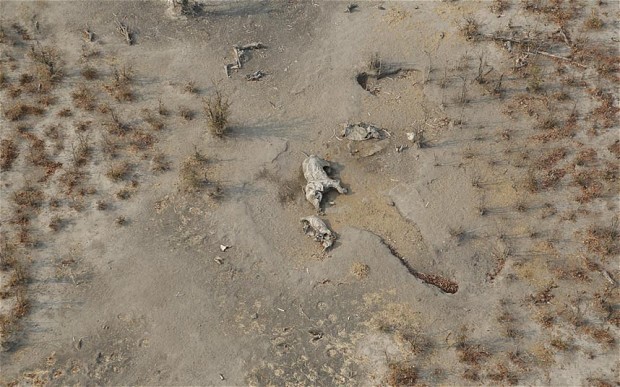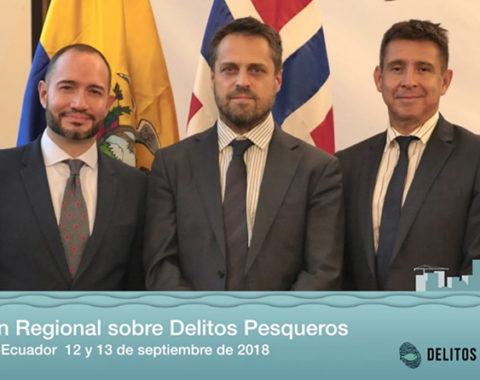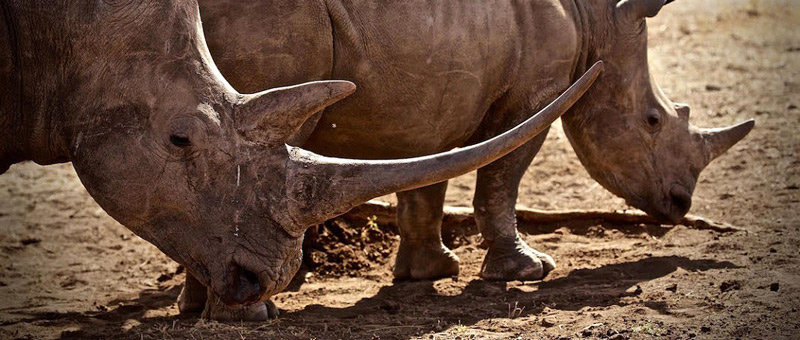Recent events and news have shown Zimbabwe for what it really is, a major regional and international hub for elephant poaching and ivory smuggling.
First there was the poisoning. Poachers have killed more than 300 elephants and countless other wild animals with cyanide in waterholes. It’s ironic that the full extent of the devastation in the country’s largest national park has been exposed by trophy hunters who discovered what conservationists say is the worst single massacre in southern Africa for 25 years.
The Elephant Action League actually considers it “a terrorist attack on elephants”.
A few poachers have been jailed for up to 15 years. However, as reported by New Zimbabwe, the political opposition MDC-T said that those arrested were insignificant foot-soldiers working at the beck and call of syndicates controlled by top Zanu-PF officials, the current governing party of the country.
Conservation groups in the country have called upon the government to investigate the possible links of politicians and influential businessmen to an international ivory smuggling ring operating in Zimbabwe. As reported by SW Radio Africa, Johnny Rodrigues, the head of the Zimbabwe Conservation Task Force, said the recent discovery of elephant carcasses killed by cyanide in Hwange National Park shows that there is a sophisticated group of people involved in poaching.
Conservationists say ZimParks needs 10 times the number of rangers it currently has to be able to prevent cyanide from being used again.
Ivory and rhino horn are continuously shipped out through the porous South African and Mozambican borders. Some of the ivory from Zimbabwe has been intercepted at international airports abroad.
In October 2013, for the first time, Chinese journalists worked with African journalists on an undercover investigation into the Chinese connection with ivory and rhino horns market in South Africa. They visited the Bruma flea market and nearby New Chinatown in eastern Johannesburg. As reported on Wildlife Extra News, a Zimbabwean who works in a craft shop says most of the rhino horns and ivory they are selling comes from his home country. He explains how he imports it: “There is a river that divides the two countries and we find a part where the water is not too deep and there is almost no security patrolling. We take off our clothes and carry the stuff on our shoulders across the river.”
Right last week two Zimbabwean cross-border bus drivers were arrested in South Africa for smuggling ivory into that country amd they have each been jailed for four years.
Meanwhile, a Chinese national was arrested last Monday at Harare International Airport for trying to smuggle 17 raw pieces of ivory valued at more than US$28,000.
Earlier this year a Chinese national managed to smuggle 500kg of ivory to China but it was detected on arrival at Beijing International Airport.
And last year, Dutch customs police seized a shipment of ivory and elephant body parts from Zimbabwe, including 22 feet, eight tusks, eight ears, three tails, a skull and an entire hide. The shipment, originating from Zimbabwe and bound for Germany, was stopped at Schiphol airport.
We are afraid this is just the tip of a huge iceberg. Nobody knows what is really going on in Zimbabwe.
But the Zimbabwe Council for Tourism (ZCT) has the courage to blame CITES’ ban on trade in ivory for massive elephant poaching. ZCT vice president Mr Francis Ngwenya in an interview last week said that CITES’ ban on trade in ivory has spawned poaching and a thriving black market for elephant tusks. The reality is that Zimbabwean politicians are just looking for some easy money and they blame CITES and the international community to prevent them to cash in. Zimbabwe cannot sell its ivory stock, valued at more than US$13 million, without permission from CITES.
Right, this is exactly what should be granted to a country that was rated among the most corrupt nations in southern Africa in a recent Transparency International (TI) survey, ranking 163 out of 176 countries.
Corruption, the real enemy of conservation.
By Andrea Crosta
EAL’s Executive Director






